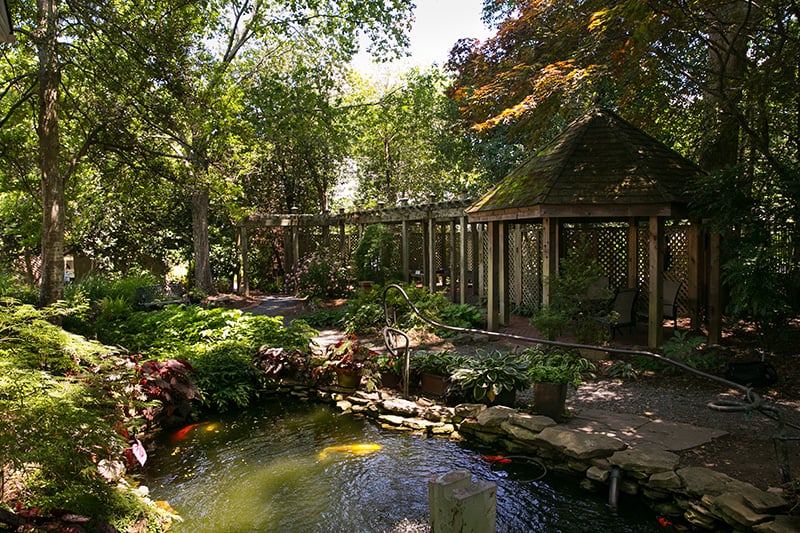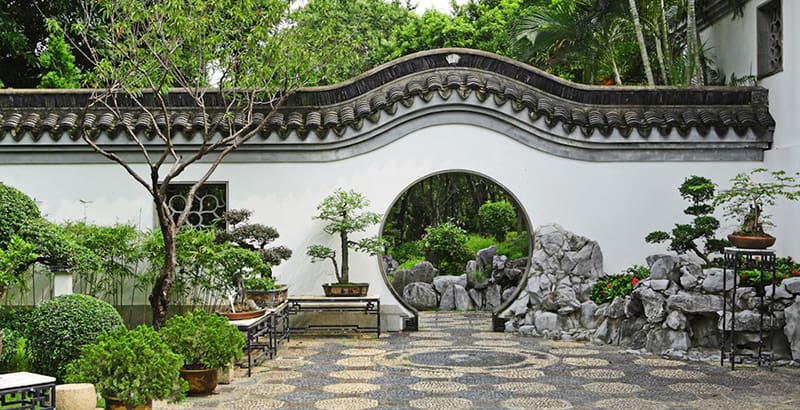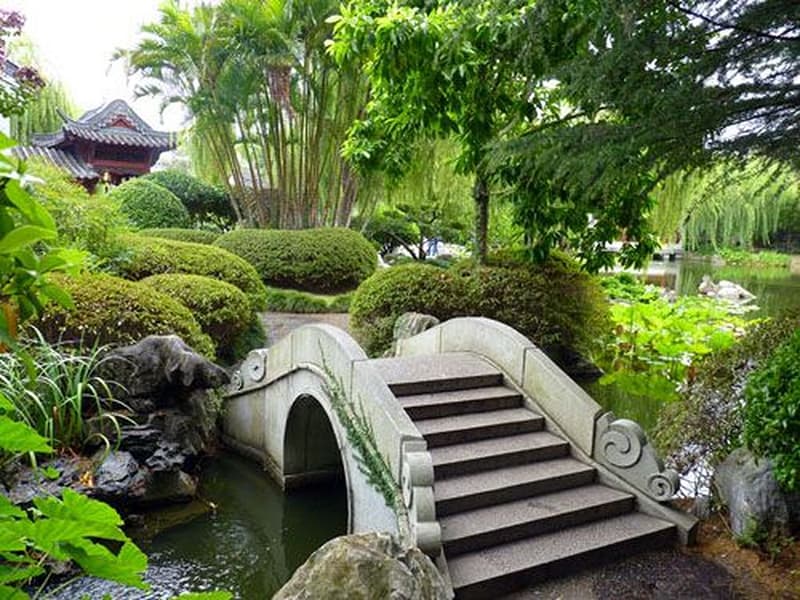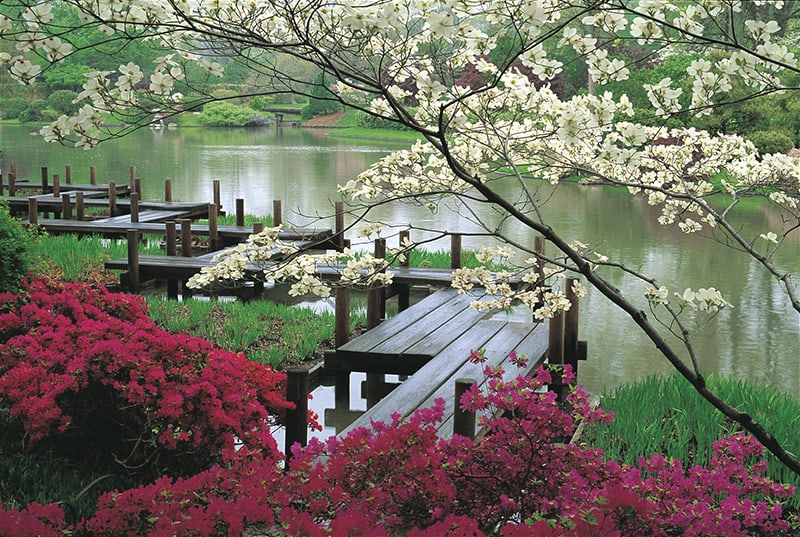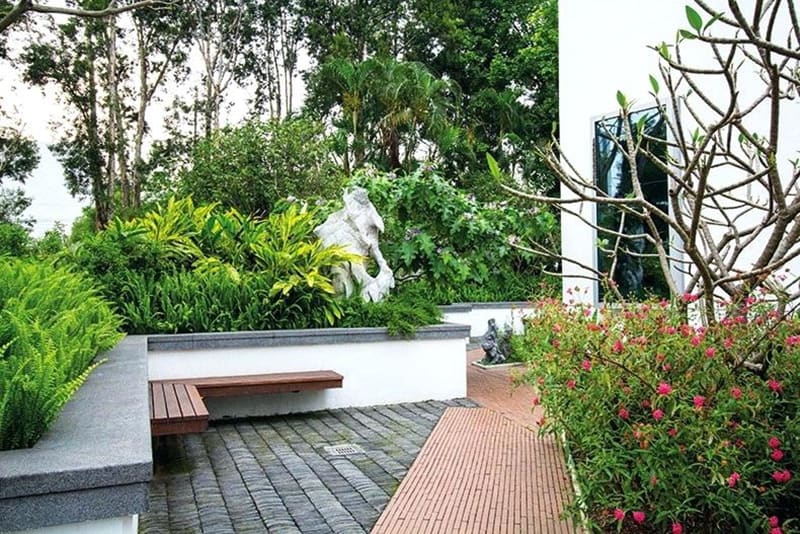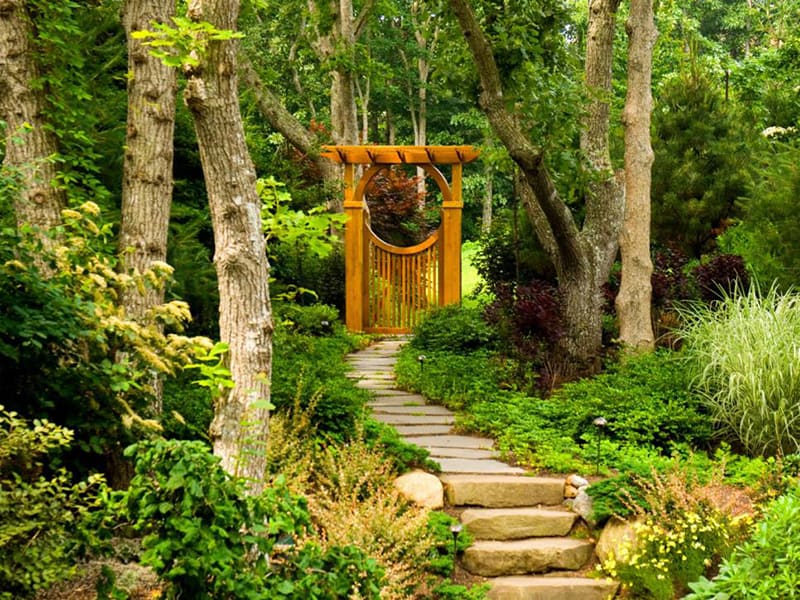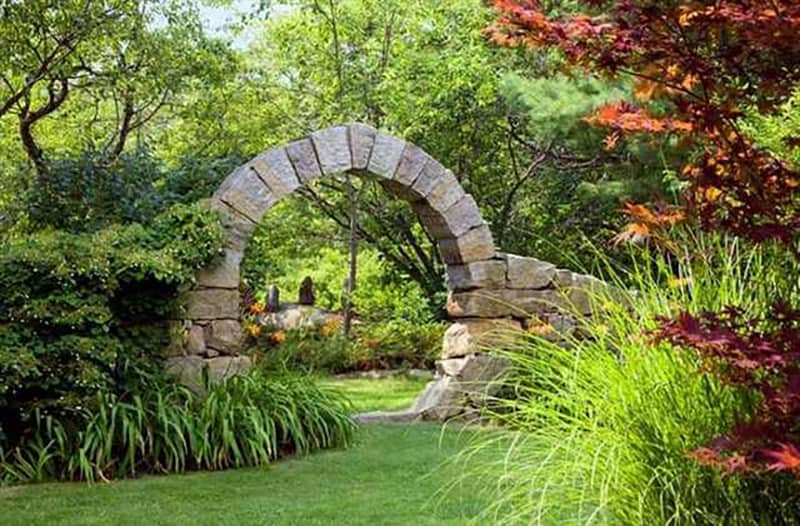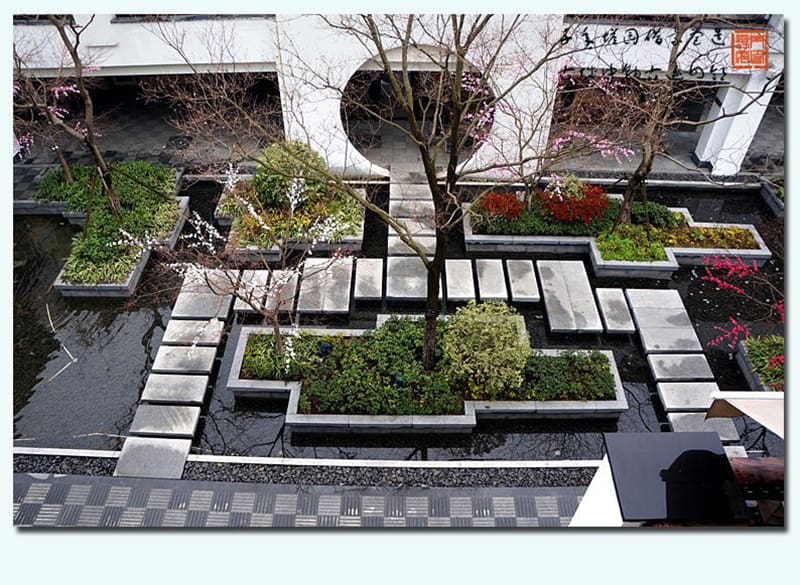A Chinese garden is a place of beauty, serenity and a spiritual connection with nature that provides busy people with much-needed respite from a noisy, stressful world. It isn’t difficult to understand the ever-increasing interest in this ancient art form.
Elegant Chinese Garden Design Inspirations for Beautiful Backyard Designs
Chinese garden designs blend the nature with elegance. Impressive oriental garden design ideas give great inspirations for peaceful and beautiful backyard designs. Chinese garden design ideas reflect the Chinese philosophies and cultures.Chinese garden designs have been influenced by several dynastic periods which added new ways of looking at gardens since the concept was established as an important part of an emperor’s official residence. In the beginning Chinese gardens were designed as homes for animals used for hunting and for the emperor to rest. Chinese gardens are elegant, impressive and peaceful places to rest and renew energy. Let’s learn more about how to create a Chinese garden of your own.
The Chinese Garden: History, Art and Architecture, Third Edition 3rd Edition
In these richly illustrated pages, Chinese gardens unfold as cosmic diagrams, revealing a profound and ancient view of the world and of humanity’s place in it. First sensuous impressions give way to more cerebral delights, and forms conjure unending, increasingly esoteric and mystical layers of meaning for the initiate. Keswick conducts us through the art and architecture, the principles and techniques of Chinese gardens, showing us their long history as the background for a civilization–the settings for China’s great poets and painters, the scenes of ribald parties and peaceful contemplation, political intrigues and family festivals.
Landscape Design in Chinese Gardens Hardcover
Contemporary interest in Chinese culture has sparked a curiosity about Chinese garden design as well. Originally built for resort homes in ancient China, these gardens for a haven of peace and tranquility, even In an urban setting. Shows examples of Chinese garden plans, compares them with Japanese and European style gardens, and discusses the use of rocks, pavements, bridges, doorways, and pavilions
The Great Gardens of China: History, Concepts, Techniques
The garden—a place for refined pleasure and spiritual relaxation—has its roots in ancient China. Western travelers from Marco Polo onward marveled at the intricacy, the elaborate buildings, the subtle design, and the assured use of plants, water, and natural materials in Chinese landscapes. The Great Gardens of China shows, through stunning original photography and cogent text, both the visual splendors of China’s finest gardens and explains their ideas and techniques in accessible terms. Now every gardener, architect, or designer can understand China’s garden heritage and be inspired to use it to dramatic effect.
This book is an excellent and beautifully illustrated treatment of Chinese gardens explaining the ideas behind them and the changes throughout history
The Splendid Chinese Garden: Origins, Aesthetics and Architecture
It explains the history of the garden, the traditions and beliefs they represent, their aesthetic and the techniques used to create them. Also included are chapters that survey the great gardens of China, the gardens tourists love to visit and gardeners dream of seeing and exploring.
The Craft of Gardens: The Classic Chinese Text on Garden Design
This Chinese gardening book is based on J Cheng’s notes and experiences from his career as a garden designer, which he discusses at some length in his introduction> Since architecture is an integral part of the Chinese garden, much of the book is taken up with the design of different types of buildings and the integration of architecture with nature in the garden. Ji Cheng explains the religious and aesthetic principles underlying garden design and the appropriate emotional response to various effects. he then offers a down-to-earth series of instructions about the requirements of different types of sites, building layouts, architectural features, paving, the construction of artificial mountains, selection of rocks, and the use of natural scenery.
Total Modernity and the Avant-Garde in Twentieth-Century Chinese Art
Excellent book on China’s contemporary art scene, reviewed from an art historian point of view – and at the same time written by someone, who was part of the whole development.
On Chinese Gardens
Written by one of the preeminent scholars in the field of garden history, On Chinese Gardens is a fascinating look into various aspects of traditional Chinese garden design and culture. The author’s elegant text provides both the garden enthusiast and specialist with an accessible introduction to the essentials of traditional Chinese garden design and historic landscape restoration, as well as a scholarly view of this great tradition. Beautiful photographs accompany essays throughout the book.
People with an interest in Chinese gardens, will have learned much about this wonderful heritage of China.
You will be inspired and enthused, to frequent Chinese gardens and study more about their nature, as a result.
On Chinese Gardens, by the late Chen Congzhou, advances the preservation of China’s garden art;
providing experienced and profound truths, of the rewards and risks facing this cultural heritage, now and on into the future.
I do not think I have identified with and empathized with, another publication, that engenders such scholarly vision;
yet bases forward thinking, soundly on past design intent and purpose.
Ancient Chinese Architecture Series, Private Gardens 1st Edition
Chinese gardens are a blend of nature and human-built structures. More than any other cultural garden tradition, they feature architectural structures — pavilions with pagoda rooflines, walls with unique openings providing peaks into the next “room,” pavement featuring checkerboard squares of pebbles in patterns; unique rocks as well as streams, lakes, waterfalls, and pools. They unfold as you walk throughout them, each area designated with an architectural focal point complimented by appropriate plantings.
Far from the Western emphasis on trees, lawns and flower beds, the private gardens of China boasts artificial hills and carefully planned ponds. The influence of Confucianism, landscape poetry and painting is omnipresent, transforming courtyards into 3D private picture galleries.
The Chinese Garden (Images of Asia)
This book draws on a wide range of literary and artistic sources to present the fundamentals of Chinese garden design. Illustrated with photographs showing detailed views of sites in Suzhou and Yangzhou, Shanghai and Beijing, it explains the aesthetic principles and practical concerns of the designer. The “reading” of a Chinese garden that it offers is enriched by a greater understanding of the literary and artistic conventions involved in the gardens construction.
Ideas of Chinese Gardens
In Ideas of Chinese Gardens, Bianca Maria Rinaldi has gathered an unparalleled collection of westerners’ accounts, many freshly translated and all expertly annotated, as well as images that would have accompanied the texts as they circulated in Europe. Representing a great diversity of materials and literary genres, Rinaldi’s book includes more than thirty-five sources that span centuries, countries, languages, occupational biases, and political aims. By providing unmediated firsthand accounts of the testimony of these travelers and expatriates, Rinaldi illustrates how the Chinese garden was progressively lifted out of the realm of fantasy into something that could be compared with, and have an impact on, European traditions.
Chinese Brutalism Today: Concrete and Avant-Garde Architecture
Chinese Brutalism Today is divided into three chapters and ends with a methodological afterword that explains the reasons why the research was carried out and the scientific tools used. The first chapter is “Exposed concrete in the design process,” the second is “Identity Research: Towards an Ornate Surface” and the third is “Global ambition: towards a polished surface.” The narration takes place through a substantial written part accompanied by specific images that facilitate the understanding of the text. Transversally, in the narrative, an interpretation is given to the precise and ambiguous dictates announced in 2017 by President Xi Jinping: to pursue a contemporary architecture made of “international standards with Chinese characteristics.”
Encyclopedia of Herbal Medicine: 550 Herbs and Remedies for Common Ailments
With 550 key herbs and their uses as natural remedies for nearly 200 common ailments, Encyclopedia of Herbal Medicine is the definitive home reference to healing with the world’s oldest form of medicine. From ginger to lavender and thyme to dandelion, learn about the chemistry of plants and how and why they work as medicines within the body.
Archetype of Chinese garden
Yu Garden is Shanghai’s main monument and one of the most beautiful gardens in China. The history of its creation and the evolution of the city over the last few centuries have made it the archetype of the Chinese garden, in which all the poetic, natural and cultural elements of the gardens are present.The art of gardening, relatively recent in China’s long history, has an intimate relationship with landscape painting, poetry and oriental architecture. Only when the thick web of symbols and implicit meanings that support a work of art can be unraveled, it can be enjoyed in all its grandeur.This garden is visited every day by thousands of people who, enjoying its essential beauty, walk carelessly through its corridors and galleries This book is fundamental to understand the cultural and historical importance of the garden, but also to appreciate the art of oriental gardening and each of the elements that compose A must-have book for all visitors to Shanghai.
The Chinese Art of Bonsai
Although most people thing bonsai is a Japanese invention, the art originated in ancient China where it is called penjing. The two Chinese characters for penjing (“pot” and “landscape”) capture the essence of this art: sculpting microcosms of the beauty of the natural world from plants, rocks, soil, and water, both as an artistic process and as horticultural cultivation.
This Chinese gardening book showcases the Chinese art of penjing in all its aspects for the benefit of penjing aficionados and all other readers interested in Chinese culture. It covers the concept, history, categories, aesthetic features, techniques, display, appreciation, and preservation of penjing. It is a feast for the eyes while providing a wealth of information for the academically inclined as well as the practically minded. There are more than 300 lavish illustrations grouped into three different categories of penjing. The reader will not only be awed by the beautiful compositions of penjing, but will also learn about the Chinese approach to nature and to life. The pictures are beautiful and the text gives you and idea of how they were accomplished. Packed full of information, history, how to, beautiful pictures. I would recommend these books to anyone wanting to advance their knowledge in bonsai.
The Chinese Art of Miniature Gardens
Bonsai, an ancient tradition with its origins in China, is a fascinating ‘living art’ that captures the beauty and strength of trees and shrubs in miniature. This book is an English translation of a chinese book on the penjing subject. Penjing ;the forerunner of bonsai has a more relaxed form , compared to how japanese people style there trees .Still, as a bonsai enthousiast, I really love this book!Showing how to style trees , work with rocks,constructing rock landscape’s and grafting ( bud grafting pine!)this book will inspire , even the most advanced bonsai lover.
This is an unbelievably beautiful book. Hu YunHua has 2 books out, and both are simple gorgeous. The art form itself is like a very small Japanese garden, and just gorgeous. Great stuff.


